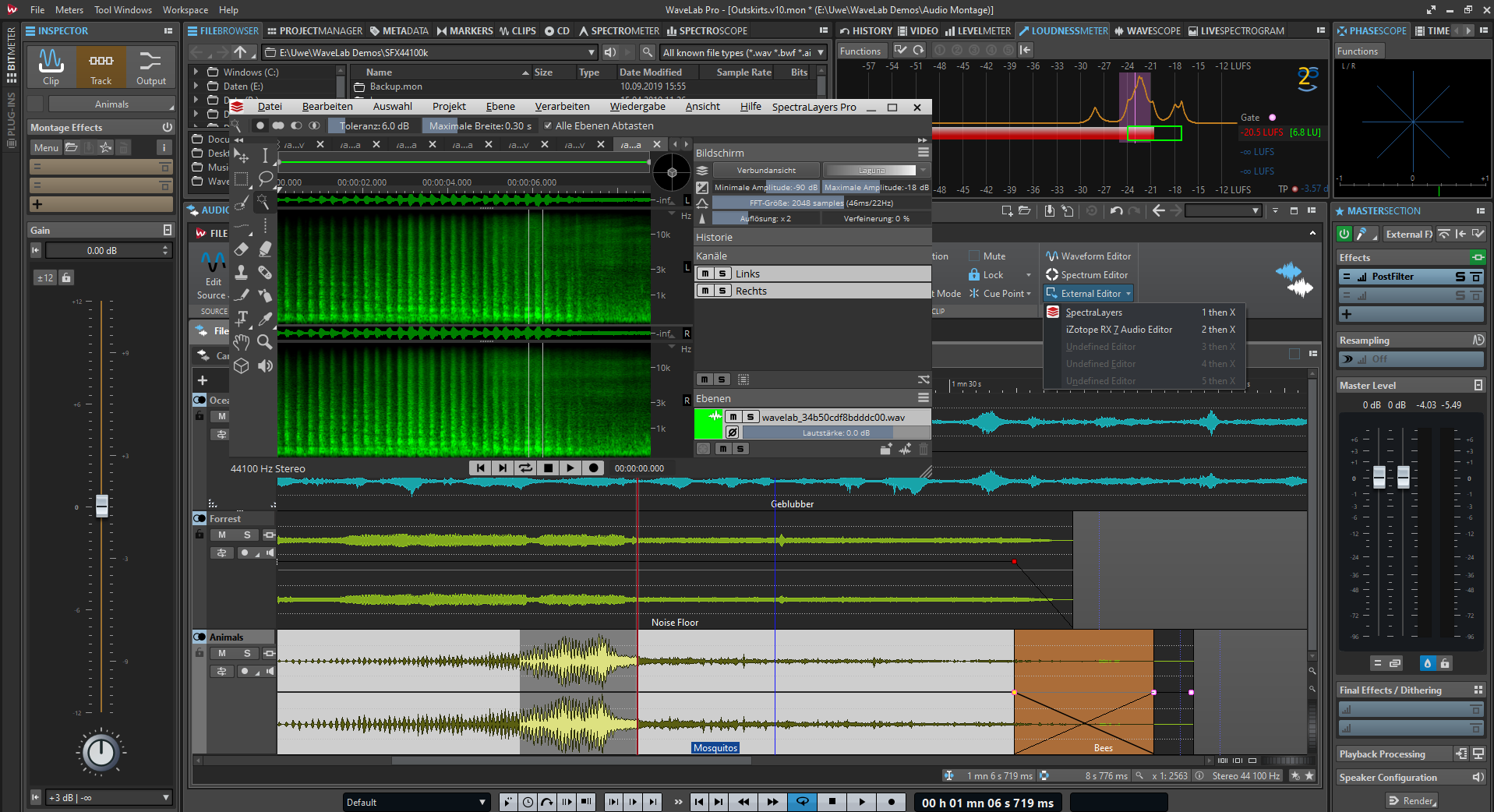


The plugin is designed to be used on a live input, but as long as you create an impulse recording during a session it will be happy to work with pre-recorded audio too. In addition there’s the new DeReverb plugin which uses a reverb impulse to filter out unwanted room noise.

These provide an excellent additional toolset to the existing Mastering and Restoration suites, which are still included with the software. Also, by dint of being a plugin, you can apply SuperVision at any point in the processing chain, which is especially useful in view of WaveLab’s new multichannel and stem mastering features.Ī number of other plugins have been carried over from WaveLab’s v11 stablemates too, specifically Frequency 2, Squasher, Imager, Quadrafuzz v2, and MixConvert v6. This allows you to create custom panels to meter your chosen combination of level, spectrum, stereo correlation, and more.

WaveLab has never been short of built-in metering tools, but Steinberg has nonetheless included its excellent SuperVision metering plugin, as found in both Cubase 11 and Nuendo 11. With WaveLab 11’s new montage bussing and processing options, this makes for a powerful yet quick way of working on surround and Ambisonics mixes. Once opened in WaveLab you can edit and work with the file in exactly the same way as you would a mono or stereo file, but you can also work on the individual channels and pass them to external editors if required.Īnother great feature is that, when used in a montage, interleaved channels are automatically extracted into mono and stereo tracks. In a similar vein, Steinberg has improved WaveLab’s handling of multichannel interleaved audio files, now supporting up to 22.2 surround channels, as well as the Ambisonics files used in VR. Clips that reside on lanes can have clip plugins and envelopes applied to them, just like any other montage clip, and a new Auto Grouping option makes it easy to lock the lane clips together for editing. Montage tracks can be split into up to eight individual lanes, each of which can host its own independent playlist of clips. Stem mastering is an inherently fiddly process, but WaveLab has always done a decent job of simplifying the procedure as much as possible, and the new Track Lanes feature makes things that bit easier still. (Image credit: Future) Stem mastering and multichannel files If embraced, this could bring huge efficiency savings to a typical video production workflow. And to top things off, WaveLab can now directly replace the soundtrack in a video file without impacting the video encoding in any way. Montages now fully utilise multi-core CPUs, leading to a very noticeable performance boost, particularly when moving between clips that have plugins applied to them. All of that said, we like that clip parameter automation is now possible, and look forward to it being improved in future updates. A bezier curve system, as found in Cubase and Nuendo, would be far easier to work with. As a result you need to add many awkward-to-edit intermediary nodes to guide the smoothing process.Īlso, the actual values specified by the nodes may never actually be used, because the averaging often pulls the smoothed curve away from those nodes. There is a smoothing option, but this averages-out the entire clip envelope. On the downside, there is no way to directly control the curvature of the lines between envelope nodes. These allow you to create automation curves to control a clip’s volume, pan and plugin parameters, and work in a familiar node-to-node style. Used widely in TV, film and broadcast, there’s little this post-production powerhouse can’t do.Ĭlips have been enhanced too, with a shiny-new Clip Envelopes feature.
#STEINBERG WAVELAB FREE#
This cross-platform audio editor/multitrack recorder is remarkably good for a free program.


 0 kommentar(er)
0 kommentar(er)
